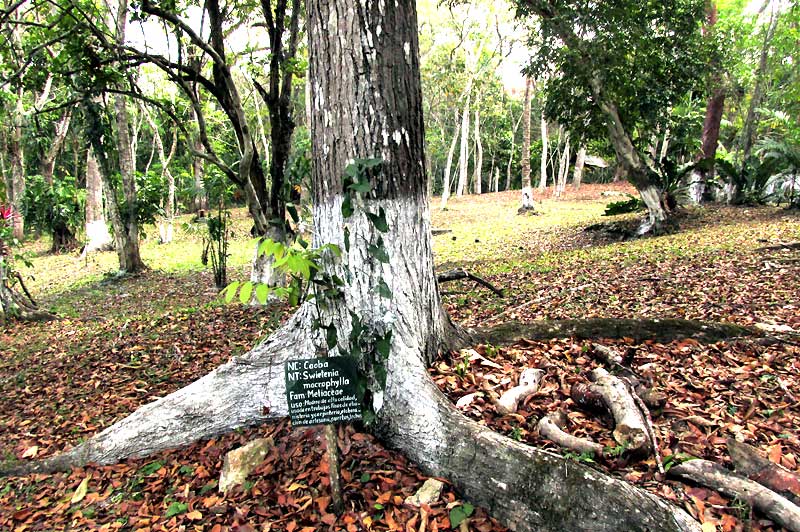Excerpts from Jim Conrad's
Naturalist Newsletter
Notes from a March 30, 2019 camping trip in El Rosario National Park on the eastern side of Sayaxché, Petén department; elevation about 125m, (410 ft), ~N16.525°, ~W90.160°; northern GUATEMALA
MAHOGANY LEAVES

Because of its hard, red-brown wood, Mahogany is one of the most famous of all trees. Though it's native to southern Mexico south through Central America, and South America's Amazon region, so far I've never found a flowering or fruiting tree I could identify as Mahogany, and the tree's leaves are so like many other species' that I really needed flowers or fruits. That's why I was glad to find in El Rosario's campground what's shown above: A tree identified by experts as Mahogany, SWIETENIA MACROPHYLLA, called Caoba in Spanish.
Note the trunk's massive, straight trunk, and its widely spreading, somewhat buttressed root system. Above, no flowers or fruits could be seen, but the leaves -- a little chlorotic for some reason -- showed the right features for Mahogany, as seen below:

One leaf arises at each point on the stem, not two (they're "alternate"), and the leaves are pinnately compound, each with three to five pairs of leaflets, and there's no leaflet at the leaf rachis tip (leaves "even-pinnate"). On the ground a stem tip broken off bore fresh leaves showing that the leaflets were a little leathery, and with "entire" margins, with no teeth or crenelations, shown below:

So, Mahogany leaves are alternate and even-pinnately compound, and the leaflets with their entire margins are a little leathery. Now to find a tree with flowers or fruits.